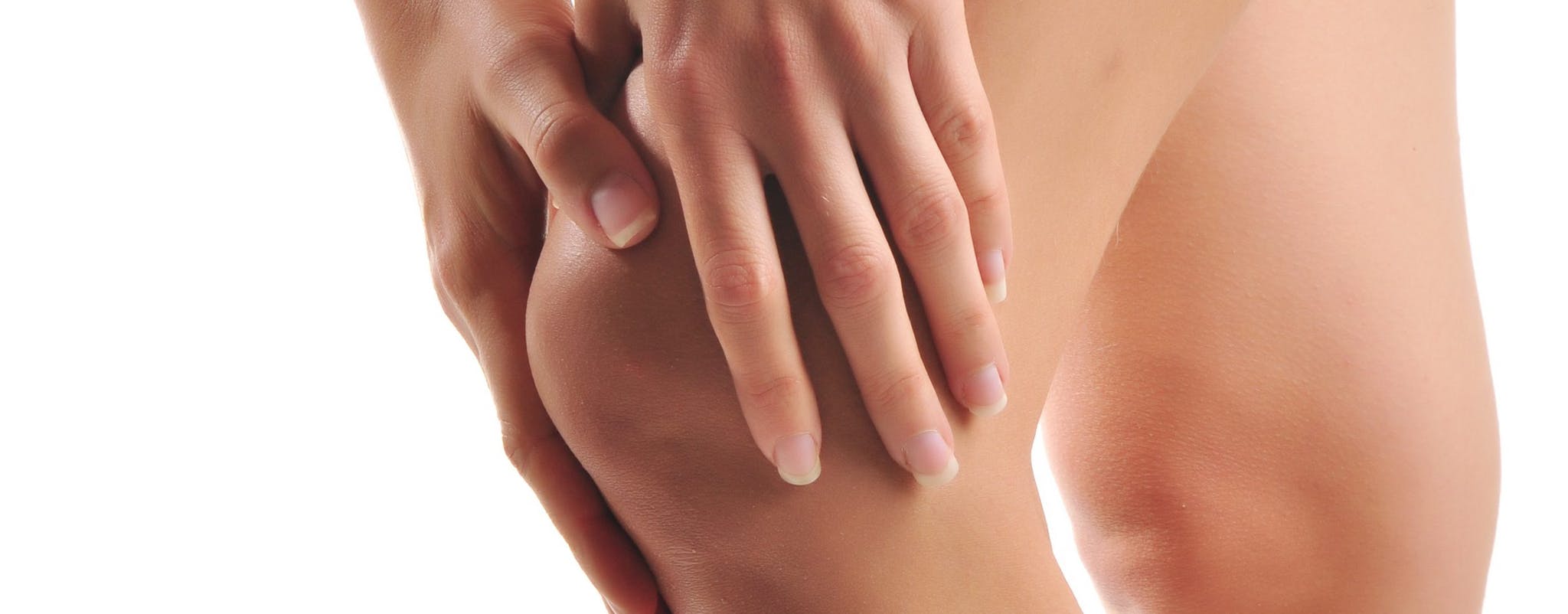
2025-06-10T13:54:10
Understanding Skin Grafts
- Dermatology
- Family Medicine
- Internal Medicine
- Orthopedics
July 19, 2016 | Orthopedics • Sports Fitness and Physical Therapy
Specialties:Orthopedics • Sports Fitness and Physical Therapy

It’s a sound and sensation every athlete dreads: the audible pop, and the pain and tenderness in the knee that indicate an MCL tear. This is an injury that involves the tearing of the ligament underneath the kneecap. It is a relatively common injury in contact sports. While an MCL tear can be extremely painful, the good news is that the tear usually heals on its own after a few weeks of rest.
The medial collateral ligament (MCL) is a band of tissue that stretches behind your kneecap from the thighbone to a point on the shinbone about four to six inches below the knee. It keeps your knee from bending backwards.
The MCL can be injured when there is a quick bend or twist in the wrong direction. These injuries are most commonly the result of a hit during a contact sport. Some of the common accidents that can lead to a sprain or tear in the MCL:
A hit during a soccer match when another player comes into contact with your knee.
An overextension of your knee during skiing. Because of the stop and go motions in downhill skiing, this is a common injury in this sport.
Twisting your knee while running such as when you slip on wet grass or catch your foot on a root or in a crack.
A collision or fall from a bicycle.
While an MCL tear can be extremely painful, the good news is that the tear usually heals on its own after a few weeks of rest.
While there are no figures available on how many MCL injuries occur each year, it is considered the most common type of knee injury.
You may hear a popping noise when the injury occurs. The tear is followed by pain, swelling and tenderness. There may be visible bruising. An MCL tear may get more painful in the hours after the injury. Your knee may feel like it is going to give out when you put weight on it. There may be an effusion, an escape of fluids into the tissue around the joint. You may also experience locking or a catching feeling in the knee joint. Not all symptoms occur in everyone who experiences an MCL injury. For instance, swelling may not be apparent.
To diagnose an MCL tear, your doctor will ask you questions about your health and your level of activity. He or she will ask how you hurt your knee and your symptoms right after the injury. Your range of motion will be tested. Your doctor may also order an MRI or an x-ray to get a firm diagnosis and rule out other problems.
You may hear a popping noise when the injury occurs. The tear is followed by pain, swelling and tenderness. There may be visible bruising. An MCL tear may get more painful in the hours after the injury. Your knee may feel like it is going to give out when you put weight on it. There may be an effusion, an escape of fluids into the tissue around the joint. You may also experience locking or a catching feeling in the knee joint. Not all symptoms occur in everyone who experiences an MCL injury. For instance, swelling may not be apparent.
To diagnose an MCL tear, your doctor will ask you questions about your health and your level of activity. He or she will ask how you hurt your knee and your symptoms right after the injury. Your range of motion will be tested. Your doctor may also order an MRI or an x-ray to get a firm diagnosis and rule out other problems.
There are three grades of MCL injuries:
Grade 1 (mild): this typically means that the ligament has been stretched but has not torn.
Grade 2 (moderate): this involves a ligament that has been partially torn. You may experience some instability in the joint.
Grade 3 (severe): this occurs when the ligament has been completely torn. You will experience instability in the joint with this level of injury. Your knee may feel like it can’t take pressure or hold your weight.
Continuing to participate in physical activity while you are injured can lead to secondary or even chronic injuries.
If you have pain in your knee, it is very important to seek medical care as soon as possible. Continuing to participate in physical activity while you are injured can lead to secondary or even chronic injuries.
The injury tends to heal on its own with rest over a period of a few weeks. You should do a few things right away to ensure that you heal quickly and completely:
Immediately after the injury, you should apply ice to help with pain and relieve swelling.
Elevate your knee over your heart using cushions. This can make it harder for fluids to pool in the affected area and can help prevent swelling.
Take aspirin or another NSAID medication to ease pain and swelling.
You can use an elastic bandage or brace for compression and to add support to your knee.
If you feel like your knee will not take pressure, you may wish to use crutches to keep weight off your knee.
In the past, it was common to recommend surgery for Grade 3 MCL tears, the most severe type of tears. However, recommendations have changed as our understanding of this injury has evolved. In almost all cases, it is not necessary to have surgery to repair an MCL tear. In some rare cases, the ligament may be torn in a way that it cannot heal itself, so surgery may become necessary. It can also be necessary if other ligaments are torn at the same time.
Your doctor will recommend wearing a knee brace during physical activity while your knee is healing. You should limit contact sports and other activities that can lead to reinjury until you have healed completely.
Physical therapy may also be used to help you heal. At first, your physical therapist will do passive exercises where you relax while your physical therapist gently moves your knee and leg to help increase your range of movement.
Strengthening the muscles around your knee can help you avoid injuring your MCL in the future. These exercises can include activities with stretch bands, cuff weights and other weight-lifting equipment. You may get a recommendation to use a stationary bike or a treadmill while you are healing to help you build more strength.
Improving your balance can also help you avoid injuries in the future. Your doctor can recommend exercises to increase balance and cut the risk of injury.
If you’ve suffered a knee injury, seek the advice of a qualified professional. Because the symptoms of an MCL tear can mimic other knee injuries, it is important to get your knee examined by a sports physician. Your doctor can give you an accurate diagnosis and the information and care you need for a full recovery.
WRITTEN BY:
The Live Better Team

2025-06-10T13:54:10

2024-06-21T14:29:51

2024-02-06T11:40:13

2023-03-30T11:23:12
This information is not intended to replace the advice of a medical professional. You should always consult your doctor before making decisions about your health.